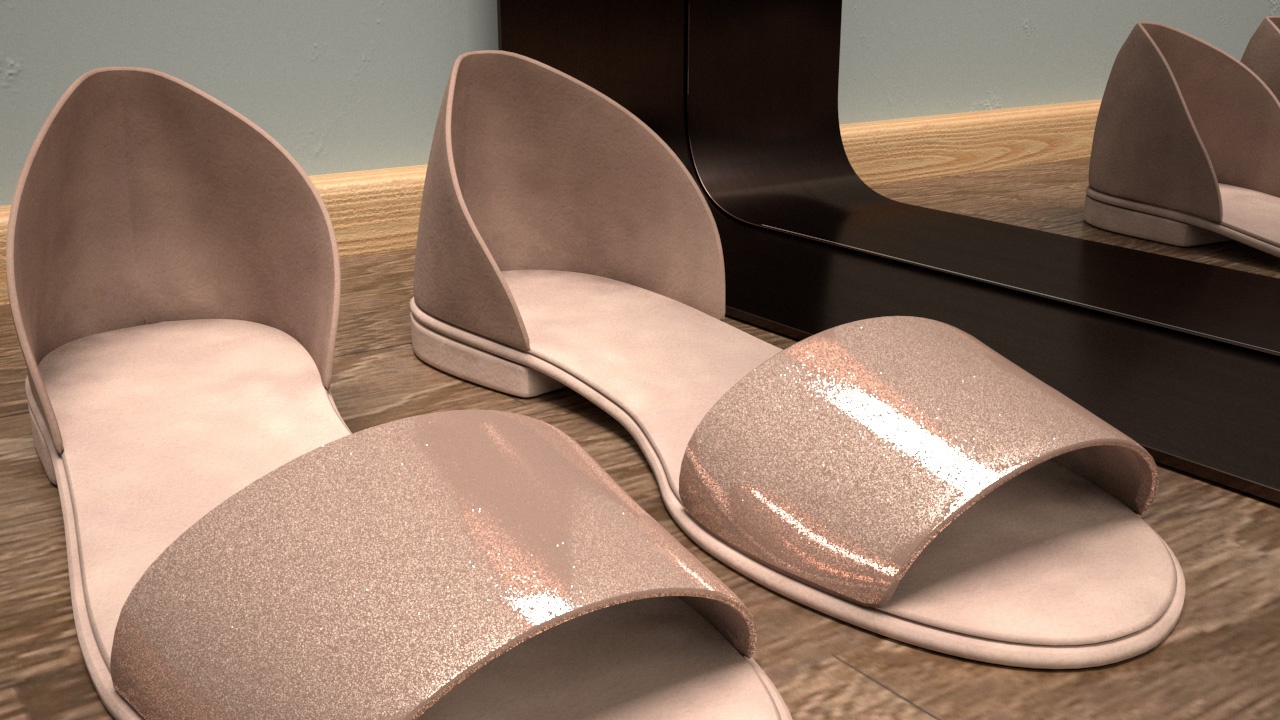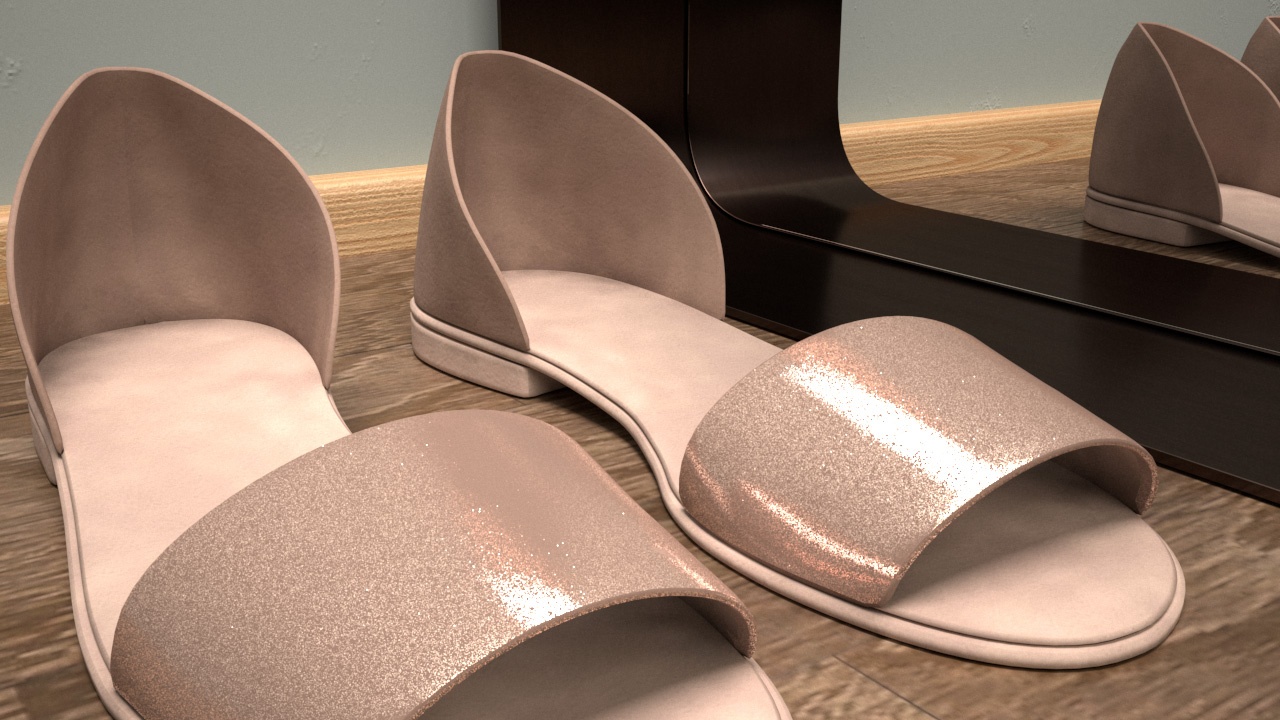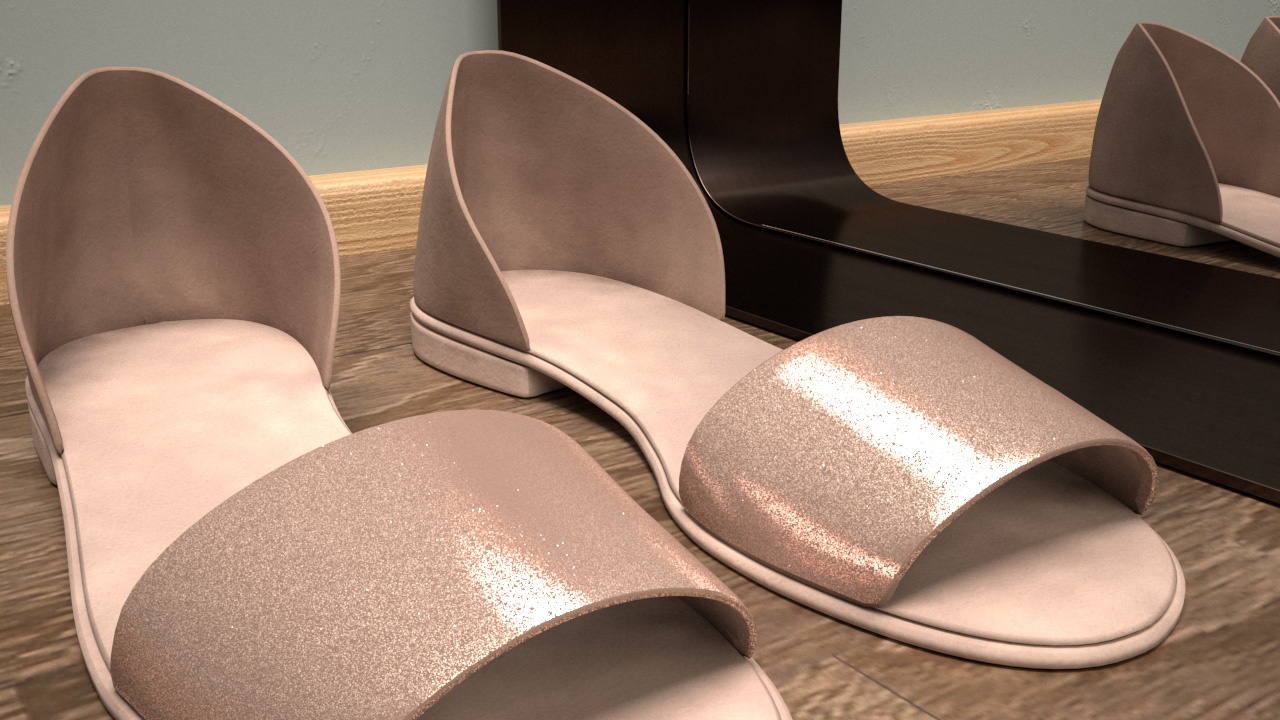Enable Flakes – When enabled, the material simulates flakes scattered on the surface of the object. If disabled, the material renders the specified BRDF type with the specified glossiness. See the Enable Flakes example below for more information. Number of Flakes – The number of flakes, expressed as the square root of the actual number of flakes in the unit texture square. For example, a value of 3000 generates 9,000,000 flakes in the unit texture square. The number of flakes is restricted to 231 (a little over 2 billion), which means the highest useful value for Number of Flakes is 46340. If you need more than 2 billion flakes, increase the Flake Scale parameter. See the Number of Scale example below for more information. Hilight Glossiness – Controls the distribution of the flakes. Values close to 1.0 orient all flakes with normals pointing more perpendicular to the surface, whereas lower values randomize the normals of the flakes. See the Highlight glossiness example below for more information. Blur Angle – Controls the "softening" of the flakes effect. Higher values produce softer results, while smaller values make the flakes sharper. Usually, values between 0.5 and 8 are used. See the Blur Angle example below for more information. Subdivs – Determines the number of samples around each flake. Reflect Filter – Specifies the reflection color of the flakes. Texture – Specifies a texture file to be used for the reflection filter. Mix Strength – Specifies a blend amount for the texture map. Mapping Type – Specifies the way the flakes are scattered on the surface: Mapping Channel – The flakes are mapped according to the specified mapping channel. The density of the flakes on the surface depends on the way the UVs follow the surface.
Triplanar – The material uses triplanar mapping to create the flakes. This mode is useful for objects that don't have suitable UV mapping. Map Channel – Specifies which map channel to use when Mapping Type is set to Mapping channel. Flake Scale – Controls the scale of the texture space. When Mapping Type is set to Mapping channel, a value of 1.0 is recommended. For Triplanar mapping, the Number of Flakes amount is distributed in each square unit in local object coordinates. In this case it is necessary to lower the Flake Scale value to 0.05, 0.01, or even less, and increase the Number of Flakes value depending on the object size, especially if square artifacts are observed. BRDF Type – Specifies the BRDF used to guide the distribution of the flakes: GGX – Uses GGX distribution for the flakes (the GGX distribution has a longer "tail" compared to Beckmann).
Beckmann – Uses a Beckmann distribution for the flakes. Seed – The seed for the randomization of flakes. Changing this value produces different flake patterns. | 






















